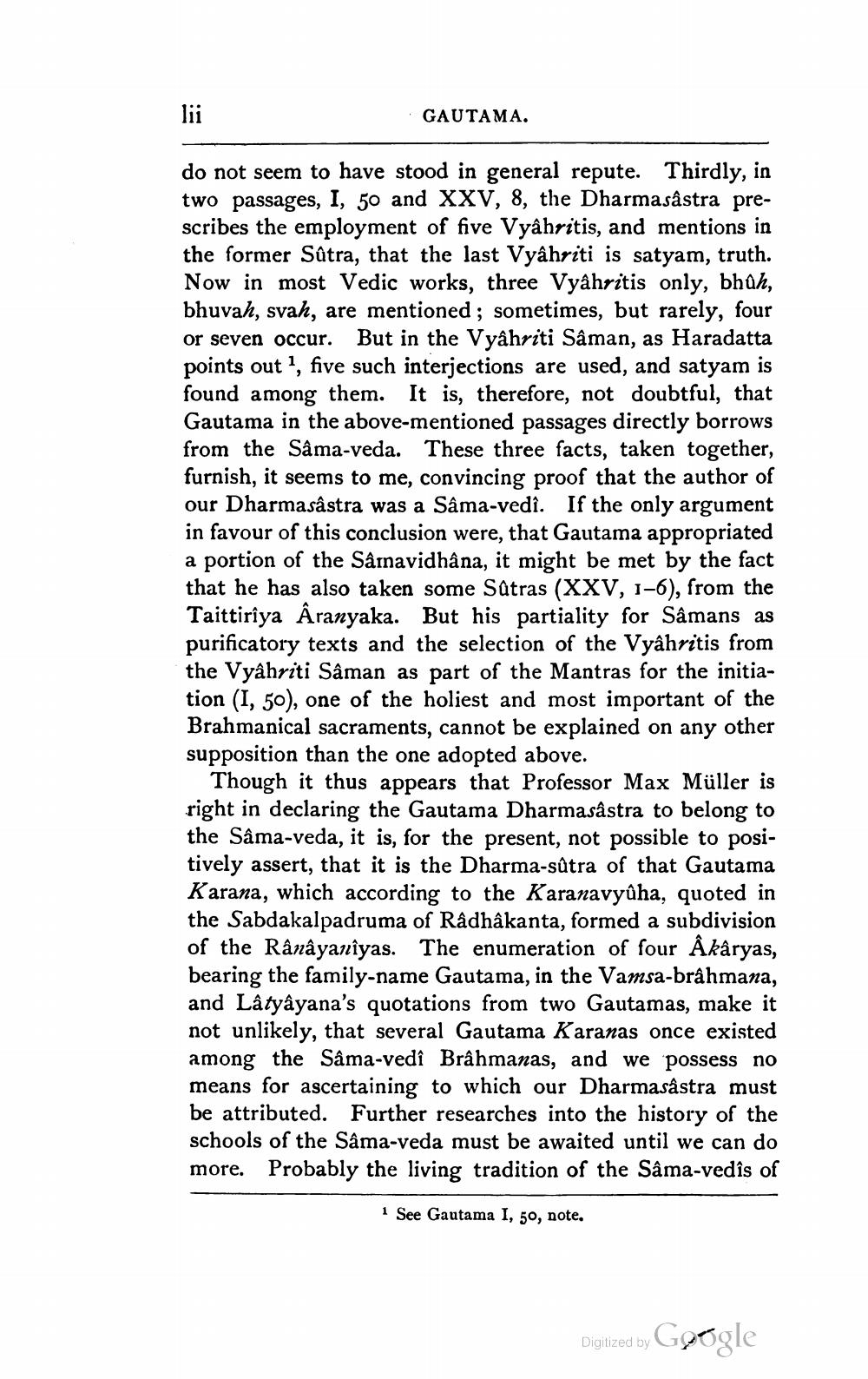________________
lii
GAUTAMA.
do not seem to have stood in general repute. Thirdly, in two passages, I, 50 and XXV, 8, the Dharmasastra prescribes the employment of five Vyâhritis, and mentions in the former Sûtra, that the last Vyâhriti is satyam, truth. Now in most Vedic works, three Vyâhritis only, bhūh, bhuvah, svah, are mentioned; sometimes, but rarely, four or seven occur. But in the Vyâhriti Sâman, as Haradatta points out 1, five such interjections are used, and satyam is found among them. It is, therefore, not doubtful, that Gautama in the above-mentioned passages directly borrows from the Sâma-veda. These three facts, taken together, furnish, it seems to me, convincing proof that the author of our Dharmasastra was a Sâma-vedî. If the only argument in favour of this conclusion were, that Gautama appropriated a portion of the Sârnavidhâna, it might be met by the fact that he has also taken some Satras (XXV, 1-6), from the Taittirîya Aranyaka. But his partiality for Sâmans as purificatory texts and the selection of the Vyâhritis from the Vyâhriti Sâman as part of the Mantras for the initiation (I, 50), one of the holiest and most important of the Brahmanical sacraments, cannot be explained on any other supposition than the one adopted above.
Though it thus appears that Professor Max Müller is right in declaring the Gautama Dharmasastra to belong to the Sâma-veda, it is, for the present, not possible to positively assert, that it is the Dharma-sútra of that Gautama Karana, which according to the Karanavyûha, quoted in the Sabdakalpadruma of Rådhâkanta, formed a subdivision of the Rânâyanîyas. The enumeration of four Åkâryas, bearing the family-name Gautama, in the Vamsa-brâhmana, and Lâtyâyana's quotations from two Gautamas, make it not unlikely, that several Gautama Karanas once existed among the Sâma-vedî Brâhmanas, and we possess no means for ascertaining to which our Dharmasastra must be attributed. Further researches into the history of the schools of the Sâma-veda must be awaited until we can do more. Probably the living tradition of the Sâma-vedîs of
See Gautama I, 50, note.
Digitized by Google




